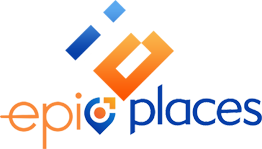In the age of rapid digital transformation, the world is witnessing the rise of new frameworks, systems, and tools designed to enhance efficiency and connectivity. One such emerging term is Kaliscan. While not yet mainstream, it has started gaining attention in conversations around technology, business, healthcare, and education.
Kaliscan symbolizes a fusion of innovation and practicality. The name itself can be broken down:
-
“Kali” suggests strength, foundation, or origin.
-
“Scan” implies analysis, observation, or evaluation.
Together, Kaliscan can be understood as a system designed to examine, analyze, and improve processes or data with a focus on adaptability and efficiency. This article explores Kaliscan in detail—its meaning, potential applications, benefits, challenges, and future role in modern industries.
What is Kaliscan?
Kaliscan is generally perceived as a multi-purpose system or framework that brings together analysis, integration, and adaptability. Whether in business, technology, healthcare, or education, the purpose of Kaliscan is to simplify processes while ensuring accuracy and long-term sustainability.
Unlike one-dimensional tools, Kaliscan is imagined as versatile and scalable, capable of serving individuals, corporations, and institutions alike.
Core Features of Kaliscan
The defining characteristics of Kalis-can include:
-
Scanning and Analysis
-
Its central function is to scan and evaluate data, objects, or workflows.
-
This helps identify errors, patterns, or areas of improvement.
-
-
Adaptability
-
Kalis-can can be applied across diverse sectors.
-
Whether it’s healthcare imaging or financial data analysis, it adapts easily.
-
-
Efficiency
-
Saves time by automating repetitive tasks.
-
Reduces costs by optimizing resources.
-
-
Integration
-
Connects multiple processes into a unified system.
-
Eliminates the need for disjointed tools and platforms.
-
-
User-Friendly Approach
-
Focuses on accessibility and ease of use.
-
Encourages adoption by both professionals and casual users.
-
Applications of Kaliscan
1. Business and Corporate Sector
In the business world, data is the new currency. Kalis-can helps organizations analyze performance, optimize workflows, and improve decision-making.
-
Market trend scanning.
-
Employee productivity analysis.
-
Process automation to reduce time wastage.
-
Integration with financial tools for efficiency.
2. Healthcare Industry
Healthcare relies heavily on scanning, monitoring, and analysis. Kaliscan could play a vital role in:
-
Medical imaging and diagnostics.
-
Scanning patient records for quick access.
-
Analyzing large health datasets for research.
-
Enhancing telemedicine platforms.
3. Technology and Digital Transformation
Technology evolves rapidly, and systems like Kalis-can support innovation by:
-
Acting as a cybersecurity scanner for threats.
-
Integrating with IoT (Internet of Things) devices.
-
Enhancing AI-driven analysis tools.
-
Supporting big data management for enterprises.
4. Education and Learning Systems
Kaliscan’s adaptability makes it valuable in education:
-
Digital exam scanning and evaluation.
-
Student record management.
-
Data-driven performance tracking.
-
Virtual classroom integrations.
5. Personal and Everyday Use
Beyond industries, Kalis-can could also assist individuals:
-
Personal file organization.
-
Document scanning for daily use.
-
Productivity applications to save time.
-
Security features for personal data protection.
Benefits of Kaliscan
Kaliscan offers multiple advantages across industries:
-
Time-Saving – Automates complex processes and reduces workload.
-
Cost-Effective – Optimizes resources and minimizes operational expenses.
-
Versatile – Applicable across healthcare, business, education, and more.
-
Scalable – Works for both small-scale users and large corporations.
-
Data-Driven Insights – Provides accurate analysis to support informed decisions.
-
Sustainability – Encourages efficient practices and reduces paper or manual tasks.
Lotology vs Other Collecting Hobbies
Kalis-can is often compared with other systems and frameworks used across industries. Its uniqueness lies in:
-
Combining both analysis and adaptability.
-
Serving as a multi-domain tool instead of a sector-specific one.
-
Being user-friendly, encouraging mass adoption.
Challenges and Limitations of Kaliscan
Despite its promise, Kalis-can may face certain challenges:
-
Implementation Costs
-
Advanced scanning and analysis frameworks may require a significant initial investment.
-
-
Data Security Risks
-
Systems dealing with sensitive data must ensure top-level encryption and security.
-
-
Customization Needs
-
Different industries may need tailor-made Kalis-can solutions.
-
-
Awareness and Adoption
-
Since the term is still emerging, many people are not yet familiar with its potential.
-
Future of Kaliscan
The future of Kaliscan looks bright in an era dominated by AI, automation, and digital transformation. Possible future advancements include:
-
AI-powered predictive scanning that can forecast outcomes.
-
Blockchain integration to ensure data security.
-
Smarter diagnostic healthcare tools for global use.
-
Eco-friendly digital scanning platforms to reduce paper dependency.
-
Cloud-based accessibility for worldwide collaboration.
As industries evolve, Kalis-can may become a universal system for scanning, analyzing, and optimizing processes, helping organizations and individuals navigate the complexities of the digital age.
Conclusion
Kalis-can represents more than just a system—it symbolizes a new way of looking at efficiency, adaptability, and technological advancement. By blending analysis with integration, it provides solutions that can reshape industries like business, healthcare, education, and personal productivity.
Though still in its early stages of recognition, Kalis-can holds significant potential to influence the future of automation, data management, and digital transformation. As adoption grows, it may well become a cornerstone in modern technology and human progress.

